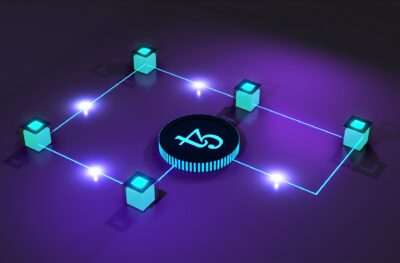Far beyond an incremental upgrade, Web3 represents a seismic shift towards a decentralized web, where users take center stage and regain control over their digital presence.
The World Wide Web, since its inception, has been a cornerstone of modern civilization, reshaping the way we connect, communicate, and conduct business. With each passing generation, the web has evolved, and now we stand on the precipice of a remarkable new chapter – Web3. In this digital landscape, the traditional foundations of the internet are being reshaped, giving rise to a decentralized web that promises to revolutionize our online experience.
Web3 represents a departure from the existing web, challenging the status quo of centralized control held by tech giants and social media platforms. Instead, it champions a user-centric approach, empowering individuals to reclaim ownership of their data, identity, and digital assets. At its core, Web3 envisions an internet where trust is built upon cryptographic protocols and distributed ledgers, ensuring transparency, security, and verifiable authenticity.
What is Web3?
Web3, in simple terms, is the next evolutionary phase of the internet. Unlike its predecessors, Web1 and Web2, which were characterized by static web pages and centralized control, Web3 embraces the principles of decentralization, digital assets, and user empowerment.
At the heart of Web3 lies the concept of decentralization, made possible through the innovative integration of blockchain technology. Traditionally, the internet has relied on central authorities to manage and control data, services, and user identities. However, with Web3’s decentralized networks, data is securely recorded and verified across a vast network of computers, ensuring transparency, security, and data ownership. Users become the true owners of their data, enabling a heightened level of privacy and control over their online identities.
A key feature of Web3 is the emergence of digital assets, particularly non-fungible tokens (NFTs). NFTs have taken the digital world by storm, revolutionizing the concept of ownership in the virtual realm. They allow creators, artists, and collectors to tokenize their digital creations and establish provable authenticity on the blockchain. This not only opens up new possibilities for artists to monetize their work but also transforms how we perceive and interact with digital art, music, videos, and more.
Empowerment is another fundamental aspect of Web3. With the advent of decentralized applications (dApps), users are actively involved in shaping the content and functionalities of the platforms they use. Web3’s cooperative governance structures, such as Decentralized Autonomous Organization (DAOs), ensure that decisions are made collectively, giving users a voice in the platforms they engage with. Additionally, smart contracts, self-executing agreements powered by blockchain, automate processes, reducing the need for intermediaries and promoting trust in digital transactions.
How is Web 3.0 different from Web 1.0 and 2.0?
As we delve into the distinctions between Web 3.0, Web 1.0, and Web 2.0, it becomes evident that each generation has left a profound impact on our digital world.
Web 1.0, or the “read-only web”, laid the groundwork for the internet we know today, offering static web pages and one-way communication. However, its limitations in interactivity and user engagement led to a need for a more dynamic and participatory web experience.
Web 2.0 emerged as a response to this demand, introducing the era of social media, online collaboration, and user-generated content. It brought people together, enabling them to share their thoughts, experiences, and creativity. The rise of platforms like Facebook, Twitter, and YouTube became synonymous with the Web 2.0 era. Nevertheless, the centralized nature of these platforms raised concerns about data privacy and control, as large technology companies amassed vast amounts of user data.
Herein lies the fundamental distinction of Web 3.0. It addresses the limitations and challenges of its predecessors by shifting towards decentralization and empowering users with true ownership and control over their data and digital assets. Instead of being mere participants, users become active stakeholders, influencing the very fabric of the decentralized web.
Key technologies & features behind Web 3.0
Web 3.0, the third generation of the web, is characterized by several revolutionary features and technologies that redefine the internet landscape. Let’s explore the key elements that make Web3.0 stand out:
- Decentralization: Web 3.0 embraces decentralization, departing from the centralized models of its predecessors. Applications and services are delivered through distributed networks, eliminating the need for central authorities. This decentralized approach enhances transparency, security, and user ownership, transforming how data and services are accessed and utilized.
- Blockchain Technology: At the heart of Web 3.0 lies blockchain, a foundational technology enabling its decentralized nature. Blockchain ensures a peer-to-peer network where data is managed and validated across multiple nodes. Its immutable ledger guarantees transaction transparency and authenticity, fostering trust among participants in the blockchain ecosystem.
- Cryptocurrency Integration: Web 3.0 introduces cryptocurrencies as a fundamental aspect of its design. These digital currencies, enabled by blockchain technology, challenge traditional “fiat currency” issued by government central banks. Cryptocurrencies offer a more efficient and borderless means of exchange, reducing fees and transaction times, and empowering individuals with greater financial control.
- Semantic Organization: Web 3.0 harnesses the potential of the Semantic Web, which organizes and categorizes information to enhance AI-based systems’ understanding of data. Websites equipped with semantic organization can comprehend search queries with human-like comprehension, leading to more accurate and relevant content generation and sharing.
- Autonomous and Artificially Intelligent: Automation, driven by artificial intelligence (AI), is a cornerstone of Web 3.0. AI-equipped websites can personalize content and services to individual users’ needs, delivering tailored and relevant information in real-time. This heightened level of autonomy simplifies users’ online experiences, streamlining data access and decision-making.
- Interoperability: Web 3.0 emphasizes interoperability between different blockchain networks and protocols. This allows seamless data and asset transfer between various decentralized applications and platforms. Interoperability ensures a more connected and collaborative decentralized ecosystem.
- Scalability Solutions: Scalability is crucial for Web 3.0’s widespread adoption. Various solutions like sharding and layer-two protocols enhance blockchain scalability, accommodating a larger number of users and transactions without compromising performance.
- Privacy and Security: Web 3.0 prioritizes user data privacy and security. Advanced cryptographic techniques and zero-knowledge proofs enable private and secure transactions and interactions on decentralized platforms.
Web3 and Metaverse
Web3 and the Metaverse are two exciting concepts that are reshaping how we engage with the digital world. They offer innovative and user-centric virtual experiences, driven by cutting-edge technologies like decentralization, blockchain, and virtual reality.
Web3, as the third generation of the internet, breaks away from the traditional centralized model. It empowers users with more control over their data and digital assets through decentralized applications (dApps), smart contracts, and cryptocurrencies. With Web3, individuals actively participate in the digital landscape and have a say in the platform’s governance.
The Metaverse is a shared virtual space that blends augmented reality, virtual reality, and the traditional internet. It creates a seamless and immersive environment where people can interact, socialize, and conduct various activities. In the Metaverse, users can explore vast digital landscapes, trade virtual assets like NFTs, attend events, and collaborate with others from around the world.
Together, Web3 and the Metaverse offer exciting opportunities for creative expression, entertainment, and commerce. They have the potential to redefine how we connect, collaborate, and experience the digital realm, leading us into a new era of virtual interactions and possibilities. As these concepts continue to evolve, they will shape the future of the internet, providing a more inclusive and interactive online experience for users worldwide.
Smart contracts explained
Smart contracts are self-executing digital agreements that operate on blockchain technology. They are programmed to automatically execute and enforce predefined conditions when specific criteria are met. These contracts eliminate the need for intermediaries and facilitate trustless transactions, ensuring transparency and security.
The concept of a smart contract is based on the If-Then-Else logic. Once certain predetermined conditions are fulfilled, the contract automatically triggers the specified action. For example, in a smart contract for a real estate transaction, if the buyer provides the payment within the agreed-upon timeframe, the contract will automatically transfer ownership of the property to the buyer.
Smart contracts offer several advantages, including increased efficiency, cost savings, and reduced risk of fraud. They find applications in various industries, ranging from supply chain management and financial services to real estate and voting systems. With their ability to automate processes and ensure reliable execution, smart contracts are a fundamental element of Web3.0, reshaping how agreements and transactions are conducted in a decentralized and secure manner.
NFT’s explained
NFTs, or Non-Fungible Tokens, have become a defining feature of Web3.0, transforming how we perceive, value, and trade digital assets. NFTs are unique digital tokens that represent ownership and authenticity of a specific item or piece of content, whether it’s digital art, music, collectibles, virtual real estate, or even tweets.
What sets NFTs apart is their non-fungible nature, meaning each token is distinct and cannot be exchanged on a one-to-one basis with other tokens, unlike cryptocurrencies like Bitcoin or Ethereum. Each NFT contains metadata that defines its uniqueness and provenance, making it valuable and distinguishable from other tokens in the same collection.
The ownership and transaction history of NFTs are recorded on a blockchain, typically on the Ethereum blockchain using standards like ERC-721 or ERC-1155. This ensures the token’s authenticity, provenance, and scarcity, addressing concerns about digital asset duplication and piracy.
The rise of NFTs has unlocked new opportunities for artists, content creators, and collectors. Artists can tokenize their digital creations, enabling them to retain more control over their work and establish direct connections with their audience. Collectors, on the other hand, can own and trade unique digital assets in a secure and transparent environment.
As NFTs continue to gain traction, they have the potential to revolutionize ownership and value attribution in the digital world, offering a glimpse into the future of digital assets and creative expression in Web3.0.
Web 3.0: Empowering Users with Control and Transparency
Web3.0 holds the promise of a decentralized and user-centric internet where individuals can reclaim control over their digital presence. Unlike its predecessors, this iteration of the World Wide Web is not just an incremental upgrade; it represents a fundamental shift towards a more transparent, secure, and autonomous online experience.
While Web3 is still in development, it holds the potential to redefine how we interact with the internet, putting users in the driver’s seat and fostering a more inclusive, transparent, and user-centric online world. With its focus on data ownership, decentralization, and empowering technologies like NFTs and smart contracts, Web3.0 is set to shape the future of the internet for the better.






